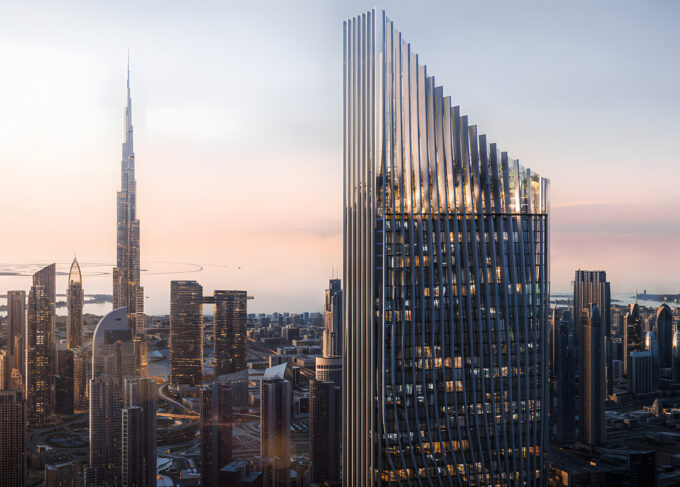Dubai continues to attract property buyers with its robust infrastructure, tax-free income policies, and strategic geographic position. Pre-sale, or off-plan, properties present a strategic way to enter this dynamic real estate market.
Off-plan properties refer to homes that are purchased before construction is completed. Often sold at discounted rates, they are favored by both investors and end-users looking to capitalize on capital gains and flexible terms.
Investors and first-time buyers benefit from understanding how to navigate the process efficiently to maximize their investment.
Pre-Sale (Off-Plan) Properties

Pre-sale properties are sold before construction concludes, often during early development phases. Buyers commit based on digital renders, brochures, and developer reputation.
Key differences include deferred handover dates, staged payment plans, and potential for customization. Ready properties, in contrast, offer immediate possession and visible inspection.
Investors seek returns through appreciation or rental income. End-users are typically drawn to price flexibility and newer amenities. Each buyer profile shapes the strategy in selecting a property.
With structured planning, due diligence, and the support of a reliable real estate agency in Dubai, investors can secure properties that yield solid long-term value.
Benefits of Buying Pre-Sale Property in Dubai
Lower entry prices are among the biggest draws. Developers offer rates below market value during early project stages, leading to significant capital appreciation upon completion.
Flexible payment plans like 40/60 or 70/30 help buyers distribute costs over time. Early investors also enjoy the first pick of units with the best views or layouts.
Properties come equipped with modern architecture, smart home integrations, and high energy efficiency standards. No mortgage is immediately necessary, making initial commitments less burdensome.
Returns on investment can be substantial, especially for those flipping units close to or post-completion.
Key Risks and How to Mitigate Them
Construction delays are common but manageable. Choose developers with a solid history of timely completions and financial stability.
Market volatility poses a risk, especially in non-core areas. Focus on zones backed by infrastructure plans and consistent demand.
Discrepancies between what was promised and what is delivered are possible. Examine previous projects, demand detailed specifications in the Sales and Purchase Agreement (SPA).
Developers may alter plans mid-project. Review the SPA for clauses detailing allowable variations and penalties for deviations.
Step-by-Step Buying Process
Buying a pre-sale property in Dubai is a structured procedure, guided by clear legal and regulatory checkpoints.
Each phase builds toward securing an asset that not only holds long-term value but also aligns with your financial and investment goals.
Investors and homebuyers can follow this sequence to reduce risk, increase transparency, and ensure a smooth handover experience.
Step #1: Budgeting and Financing
Start with a clear estimate of your total purchasing power. Factor in not only the base price but also Dubai Land Department fees, maintenance costs, and potential furnishings.
For non-residents, the standard down payment requirement is usually 20% or more.
Having a pre-approved mortgage adds credibility during negotiations and simplifies later stages. Pre-approval also speeds up the process once the right unit is identified.
Step #2: Market Research & Choosing the Right Location

Analyze trends in high-demand areas like Downtown Dubai, Dubai Marina, and Jumeirah Village Circle. Look at metrics such as past appreciation, infrastructure announcements, and occupancy rates.
Metro expansion, new commercial zones, and school proximity often influence future property value.
Online portals, government updates, and real estate agency reports are valuable resources for decision-making.
Step #3: Choose a Reputable Developer and Agent
Select a developer who is approved by the Dubai Land Department and has a consistent record of delivering on time.
Investigate past projects, customer reviews, and any news about legal disputes or delays.
For added security, work with a RERA-certified broker who can navigate legal steps, handle paperwork, and assist in negotiation.
Transparency and licensing are crucial for protection throughout the process.
Step #4: Legal Preparations and Documentation
Prepare identification and residency documentation, including a valid passport, UAE visa, and Emirates ID if applicable.
Confirm that your payments are made into a regulated escrow account, which ensures that funds are released to the developer only based on construction milestones.
Use tools like the Dubai REST app to track your transactions and maintain official records in real-time.
Step #5: Review and Sign the Sales and Purchase Agreement (SPA)
The SPA defines your relationship with the developer and outlines all conditions, deadlines, and rights.
Review payment schedules, penalty clauses, delivery timelines, and exit options. It’s advisable to hire a legal advisor to interpret complex sections and ensure that no hidden liabilities are passed onto you.
Pay close attention to flexibility terms, cancellation conditions, and amendment rights granted to the developer.
Step #6: Register the Oqood with the DLD

The Oqood certificate officially links your name to the off-plan property and registers your interest with Dubai authorities. Submit your identification documents and pay the registration fee, typically 4% of the property value. Once completed, your interest in the property is protected and documented through the Dubai Land Department.
Step #7: Monitor Construction Progress
After the SPA and Oqood, keep track of how the project evolves.
Developers often send out construction updates, which you should review closely. Schedule periodic site visits to evaluate progress firsthand.
As the completion date nears, hire a snagging expert to inspect the property for defects, incomplete features, or quality concerns.
Addressing issues before handover avoids costly repairs later.
Step #8: Final Payment and Handover
Once construction is declared complete and ready for occupancy, arrange the final payment as per the SPA. Developers typically request this after passing key inspection milestones.
At handover, receive your property keys, title deed, and occupancy certificate.
Verify that all documentation is accurate and securely archived under your name. You can now move in, lease, or prepare to sell.
What Happens After Handover?
Prepare for move-in by activating utilities, scheduling cleaning, and performing pest control if needed. Tenants may begin leasing immediately after completion.
Hiring a property management company helps with leasing, rent collection, and tenant issues.
Selling before final handover requires a No Objection Certificate from the developer and settlement of any outstanding payments.
Common Mistakes to Avoid
Overlooking the SPA details may lead to unmet expectations. Review all clauses thoroughly.
Ignoring fees like the 4% DLD registration cost, maintenance charges, or service fees can lead to budgeting issues.
Choosing projects in low-demand areas or from unverified developers reduces resale value and increases risk.
Skipping legal consultation or due diligence often results in future disputes or financial loss.
The Bottom Line

Dubai offers compelling opportunities in pre-sale real estate.
Professional guidance ensures smoother transactions, better property selection, and risk mitigation for maximum investment return.









